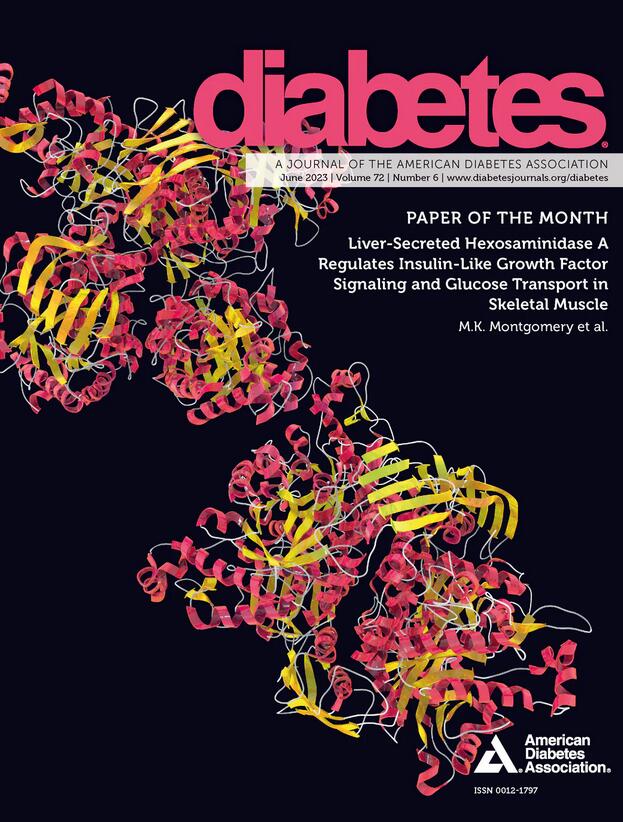Identification of BAF60b as a chromatin remodeling checkpoint of diet-induced fatty liver disease
IF 6.2
1区 医学
Q1 ENDOCRINOLOGY & METABOLISM
引用次数: 0
Abstract
Overnutrition has gradually become the primary causative factor of nonalcoholic fatty liver disease (NAFLD). However, how nutritional signals are integrated to orchestrate the transcriptional programs important for NAFLD progression remains poorly understood. Here, we identified hepatic BAF60b as a lipid-sensitive subunit of the switch/sucrose-nonfermentable (SWI/SNF) chromatin-remodeling complex and is negatively associated with liver steatosis in mice and humans. Hepatic BAF60b deficiency promotes high-fat diet (HFD)-induced liver steatosis in mice, while transgenic expression of BAF60b in the liver attenuates HFD-induced obesity and NAFLD, both accompanied by a marked regulation of PPARγ expression. Mechanistically, through motif analysis of liver ATAC-Seq and multiple validation experiments, we identified CCAAT/enhancer-binding protein β (C/EBPβ) as the transcription factor that interacts with BAF60b to suppress PPARγ gene expression, thereby controlling hepatic lipid accumulation and NAFLD progression. This work uncovers hepatic BAF60b as a negative regulator of liver steatosis through C/EBPβ dependent chromatin remodeling.确定 BAF60b 是饮食诱发脂肪肝的染色质重塑检查点
营养过剩已逐渐成为非酒精性脂肪肝(NAFLD)的主要致病因素。然而,人们对营养信号如何整合以协调对非酒精性脂肪肝进展非常重要的转录程序仍然知之甚少。在这里,我们发现肝脏 BAF60b 是开关/蔗糖不发酵(SWI/SNF)染色质重塑复合物的脂质敏感亚基,与小鼠和人类的肝脏脂肪变性呈负相关。肝脏 BAF60b 缺乏会促进高脂饮食(HFD)诱导的小鼠肝脏脂肪变性,而在肝脏中转基因表达 BAF60b 可减轻 HFD 诱导的肥胖和非酒精性脂肪肝,两者都伴有 PPARγ 表达的明显调节。从机理上讲,通过对肝脏ATAC-Seq的基序分析和多重验证实验,我们发现CCAAT/增强子结合蛋白β(C/EBPβ)是与BAF60b相互作用抑制PPARγ基因表达的转录因子,从而控制肝脏脂质积累和非酒精性脂肪肝的进展。这项研究揭示了肝脏 BAF60b 通过 C/EBPβ 依赖性染色质重塑成为肝脏脂肪变性的负调控因子。
本文章由计算机程序翻译,如有差异,请以英文原文为准。
求助全文
约1分钟内获得全文
求助全文
来源期刊

Diabetes
医学-内分泌学与代谢
CiteScore
12.50
自引率
2.60%
发文量
1968
审稿时长
1 months
期刊介绍:
Diabetes is a scientific journal that publishes original research exploring the physiological and pathophysiological aspects of diabetes mellitus. We encourage submissions of manuscripts pertaining to laboratory, animal, or human research, covering a wide range of topics. Our primary focus is on investigative reports investigating various aspects such as the development and progression of diabetes, along with its associated complications. We also welcome studies delving into normal and pathological pancreatic islet function and intermediary metabolism, as well as exploring the mechanisms of drug and hormone action from a pharmacological perspective. Additionally, we encourage submissions that delve into the biochemical and molecular aspects of both normal and abnormal biological processes.
However, it is important to note that we do not publish studies relating to diabetes education or the application of accepted therapeutic and diagnostic approaches to patients with diabetes mellitus. Our aim is to provide a platform for research that contributes to advancing our understanding of the underlying mechanisms and processes of diabetes.
 求助内容:
求助内容: 应助结果提醒方式:
应助结果提醒方式:


